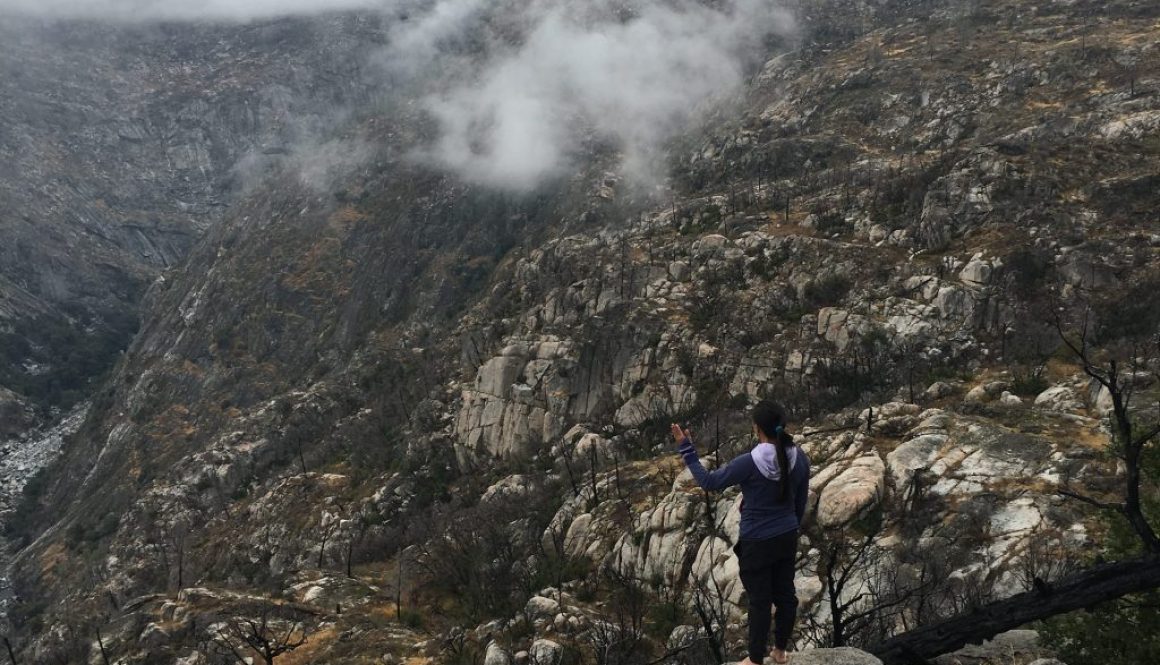Letting Go ~ Letting Love
The Holiday season and end of a year finds many of us reminiscing, feeling nostalgic, perhaps clinging to the familiar. It may equally find us on the edge of something new, a burst of willpower, or the beginnings of significant transformation. It is the perfect time to tap into one of the foundational practices of yoga: Vairagya.
Vairagya or Non-Attachment is the mental stance of freedom from the colorings of attractions, aversion, fears and false identities that are clouding the true Self. Non-Attachment is one of the two foundation practices of Yoga. The simplest way of describing Non-Attachment is as the process of letting go…(Swami Jnaneshvara)
Non-attachment, or letting go can be practiced as a “small arc”, AND as the large arc of our lifetime. What I mean is that we can be letting go of specific emotions, people, things etc in very small yet significant ways on a regular basis; this is the “small arc” of daily practice. Over time this influences the larger arc of our entire lifetime and we observe ourselves holding on less tightly to our expectations and attachments. As Swami J describes; We gradually learn to let go of our attachments and aversions, systematically moving subtler and subtler through the layers of attachments in the mind.
Vairagya eventually becomes more than just letting go, as we become more conscious; it is not just a practice of letting go, but is a practice of not “taking on” in the first place. Non-Attachment is not a process of suppression or repression of wants, wishes, desires, thoughts, or emotions. It comes by the ongoing practice of awareness of the existence of attachments and gradually letting these weaken…(Swami Jnaneshvara)
This is an important distinction; Vairagya has nothing to do with will power or trying to force a change in our behavior or mental patterns. Rather it hinges on practicing awareness; noticing when and where attachment is arising. Gradually the attachments become less strong, not as all encompassing. We begin to feel we could take it or leave it and it wont ruffle the peace we are leaning into. (Swami Jnaneshvara)
I have been practicing Vairagya in a consistent way over the last couple of years and this approach is really serving me as I make a huge transition in my life. Over the last two months I have separated from my husband, accepted a new job in a new location, and accepted an offer for the sale of my house. Certainly there have been innumerable moments where attachment and fear have crept in (or avalanched in), however overall I have felt incredibly peaceful and able to listen to the clarity of my heart. In the moments that fear assaults me, I pause, breathe, attend to it, sit with it, listen to it, breathe into it, and it passes. Without having cultivated a practice of Vairagya, I am sure I would not be able to let go and open to the possibilities of what awaits with such ease.
My personal share is mostly about letting go at the emotional level. However we can also practice Vairagya on the mental and physical planes. Have you ever had a thought that just keeps nagging you? We all have! Learning to acknowledge that its happening and having an array of tools to meet it is invaluable. It all begins with awareness; next time you find yourself circling around about an issue I welcome you to simply notice that is happening. Pause, take a breath, thank your mind for working so hard to try and support you. Then notice what happens. Do this over and over, and let me know how it goes in the comments below!
Have you ever noticed your jaw is clenched or your shoulders hunched, or belly tight? We can hold a lot in our physical body as well. As we practice the awareness, physically held tension becomes more obvious and we are able to exhale and let go of those patterns. One of my favorite practices for letting go of physical attachment is Savasana. Please access one of these guided Savasana meditations if you’d like to practice Vairagya on the physical plane!
As we bid farewell to the year it is good to acknowledge that it has brought you many lessons and you can consciously harvest them as we move into the new year. One of my mentors, Marie Forleo, offers these three potent questions you might ask yourself:
- What is one thing you did this year that you’re proud of?
- What is one mistake you made and the lesson you’ve learned?
- What is one limiting story you’re ready to let go of before the new year?

